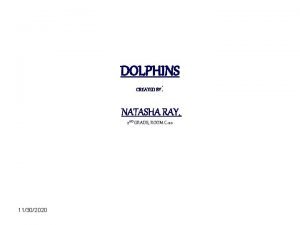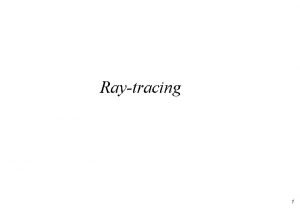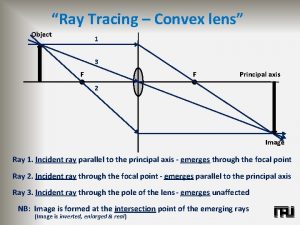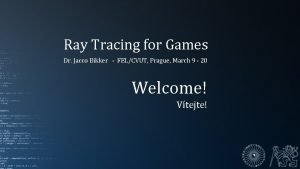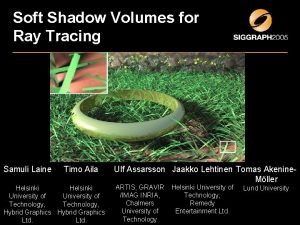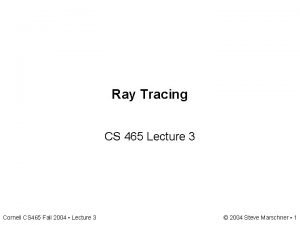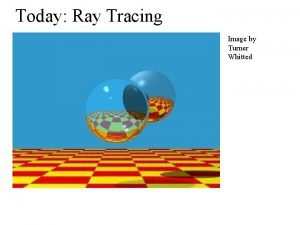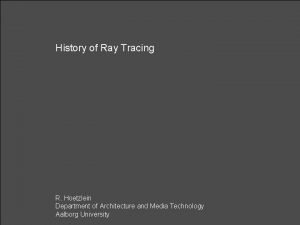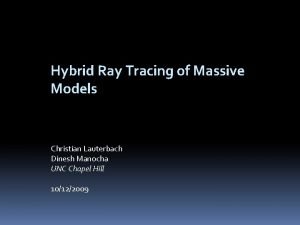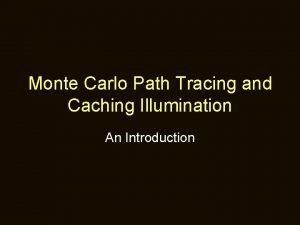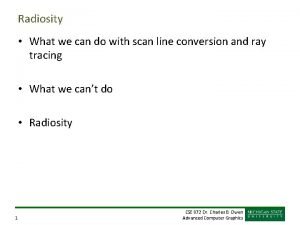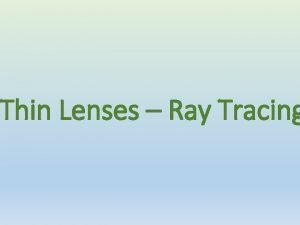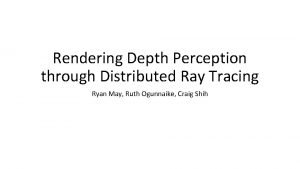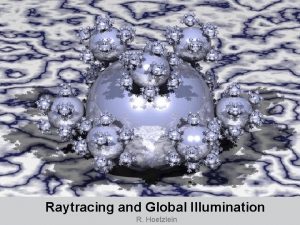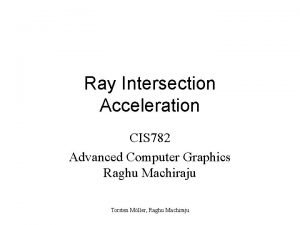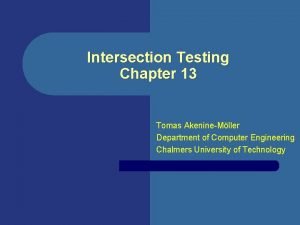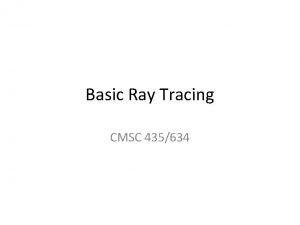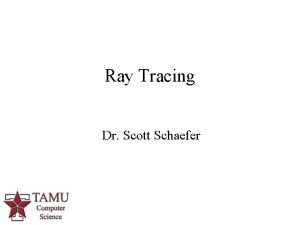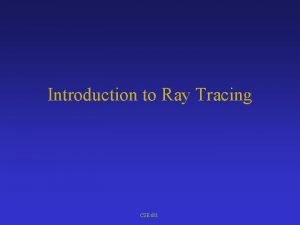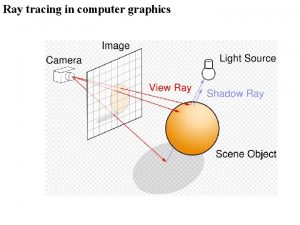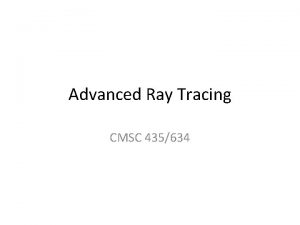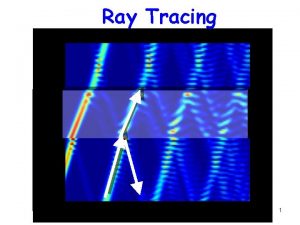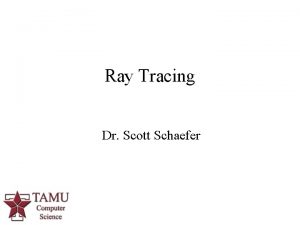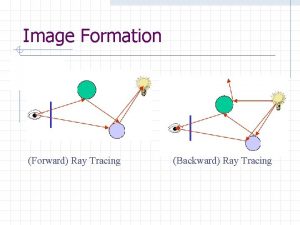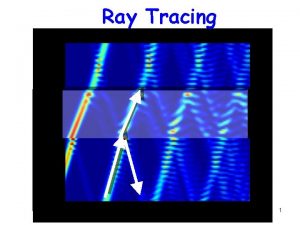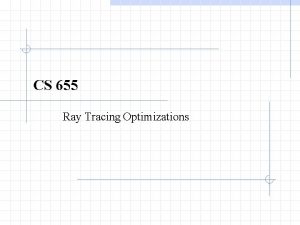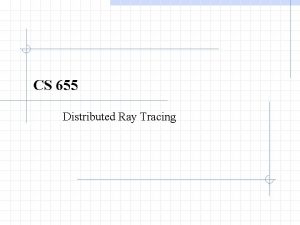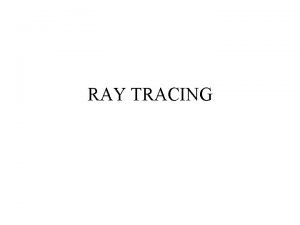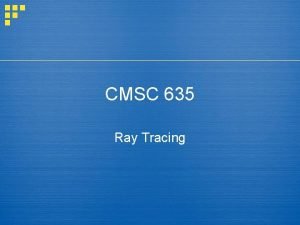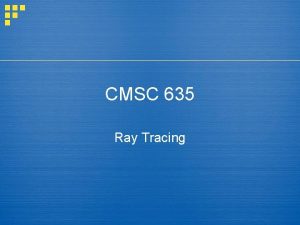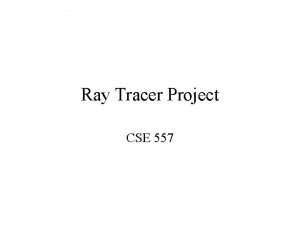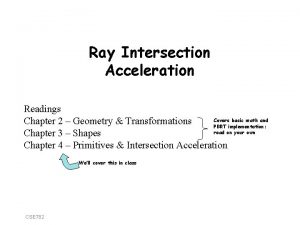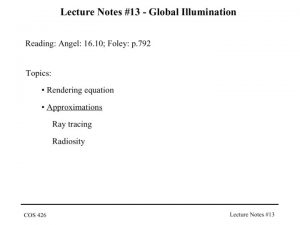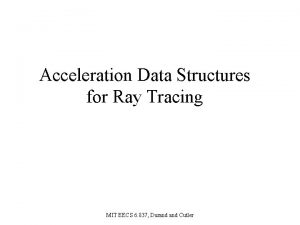Ray Tracing Acceleration Techniques Approaches Faster Intersection N












![Ray Traversal Algorithms Recursive inorder traversal [Kaplan, Arvo, Jansen] Intersect(L, tmin, tmax) Intersect(L, tmin, Ray Traversal Algorithms Recursive inorder traversal [Kaplan, Arvo, Jansen] Intersect(L, tmin, tmax) Intersect(L, tmin,](https://slidetodoc.com/presentation_image_h2/11ef2471719474ea107c409486661f0c/image-13.jpg)











- Slides: 24

Ray Tracing Acceleration Techniques Approaches Faster Intersection N Uniform grids Spatial hierarchies k-d, oct-tree, bsp hierarchical grids Hierarchical bounding volumes (HBV) Fewer Rays Generalized Rays 1 Tighter bounds Faster intersector Early ray termination Adaptive sampling Beam tracing Cone tracing Pencil tracing

Primitives pbrt primitive base class n n Shape Material and emission (area light) Primitives n n Basic geometric primitive Primitive instance n n Transformation and pointer to basic primitive Aggregate (collection) n n Treat collections just like basic primitives Incorporate acceleration structures into collections May nest accelerators of different types Types: grid. cpp and kdtree. cpp

Uniform Grids Preprocess scene n Find bounding box

Uniform Grids Preprocess scene n Find bounding box n Determine resolution

Uniform Grids Preprocess scene n n n Find bounding box Determine resolution Place object in cell, if object overlaps cell

Uniform Grids Preprocess scene n n Find bounding box Determine resolution Place object in cell, if object overlaps cell Check that object intersects cell

Uniform Grids Preprocess scene Traverse grid 3 D line – 3 D-DDA 6 -connected line Section 4. 3

Caveat: Overlap Optimize for objects that overlap multiple cells Traverse until tmin(cell) > tmax(ray) Problem: Redundant intersection tests: Solution: Mailboxes n n Assign each ray an increasing number Primitive intersection cache (mailbox) n n Store last ray number tested in mailbox Only intersect if ray number is greater

Spatial Hierarchies A A Letters correspond to planes (A) Point Location by recursive search

Spatial Hierarchies A B B A Letters correspond to planes (A, B) Point Location by recursive search

Spatial Hierarchies A D B B C C D A Letters correspond to planes (A, B, C, D) Point Location by recursive search

Variations kd-tree oct-tree bsp-tree
![Ray Traversal Algorithms Recursive inorder traversal Kaplan Arvo Jansen IntersectL tmin tmax IntersectL tmin Ray Traversal Algorithms Recursive inorder traversal [Kaplan, Arvo, Jansen] Intersect(L, tmin, tmax) Intersect(L, tmin,](https://slidetodoc.com/presentation_image_h2/11ef2471719474ea107c409486661f0c/image-13.jpg)
Ray Traversal Algorithms Recursive inorder traversal [Kaplan, Arvo, Jansen] Intersect(L, tmin, tmax) Intersect(L, tmin, t*) Intersect(R, tmin, tmax) Intersect(R, t*, tmax)

Build Hierarchy Top-Down ? Choose splitting plane • Midpoint • Median cut • Surface area heuristic

Surface Area and Rays Number of rays in a given direction that hit an object is proportional to its projected area The total number of rays hitting an object is Crofton’s Theorem: n For a convex body For example: sphere

Surface Area and Rays The probability of a ray hitting a convex shape that is completely inside a convex cell equals

Surface Area Heuristic Intersection time Traversal time a b

Surface Area Heuristic 2 n splits a b

Comparison V. Havran, Best Efficiency Scheme Project http: //sgi. felk. cvut. cz/BES/

Comparison

Univ. Saarland RTRT Engine Ray-casts per second = FPS @ 1 K × 1 K RT&Shadin SSE g no shd. simple shd. Scene ERW 6 (static) 7. 1 ERW 6 (dynamic) 4. 8 Conf (static) 4. 55 Conf (dynamic) 2. 94 Pentium-IV 2. 5 GHz laptop Soda Hall 4. 12 2. 3 1. 97 1. 93 1. 6 1. 8 No SSE simple shd. 1. 37 1. 06 1. 2 0. 82 1. 055 • Kd-tree with surface-area heuristic [Havran] • Wald et al. 2003 [http: //www. mpi-sb. mpg. de/~wald/]

Interactive Ray Tracing Highly optimized software ray tracers n n Use vector instructions; Cache optimized Clusters and shared memory MPs Ray tracing hardware n AR 250/350 ray tracing processor www. art-render. com n Saar. COR Ray tracing on programmable GPUs

Theoretical Nugget 1 Computational geometry of ray shooting 1. Triangles (Pellegrini) Time: n Space: n 2. Sphere (Guibas and Pellegrini) Time: n Space: n

Theoretical Nugget 2 Optical computer = Turing machine y = y+1 Reif, Tygar, Yoshida Determining if a ray starting at y 0 arrives at yn is undecidable y = -2*y if( y>0 )
 Ray casting vs ray tracing
Ray casting vs ray tracing Dolphin ray tracing
Dolphin ray tracing Recursive ray tracing
Recursive ray tracing Ray tracing convex lens
Ray tracing convex lens Ray tracing actor
Ray tracing actor Samuli laine
Samuli laine Albrecht dürer ray tracing
Albrecht dürer ray tracing Whitted ray tracer
Whitted ray tracer Hoetzlein origin
Hoetzlein origin Hybrid ray tracing
Hybrid ray tracing Monte carlo path tracing
Monte carlo path tracing Ray tracing vs radiosity
Ray tracing vs radiosity Lens ray tracing
Lens ray tracing Wlp
Wlp Depth of field ray tracing
Depth of field ray tracing Ray tracing c#
Ray tracing c# Hoetzlein origin
Hoetzlein origin 1/f = 1/do + 1/di
1/f = 1/do + 1/di Intersection of three planes
Intersection of three planes Ray box intersection
Ray box intersection Ray box intersection
Ray box intersection Ray triangle intersection barycentric
Ray triangle intersection barycentric Centripetal acceleration tangential acceleration
Centripetal acceleration tangential acceleration Angular acceleration and linear acceleration
Angular acceleration and linear acceleration Radial acceleration formula
Radial acceleration formula

